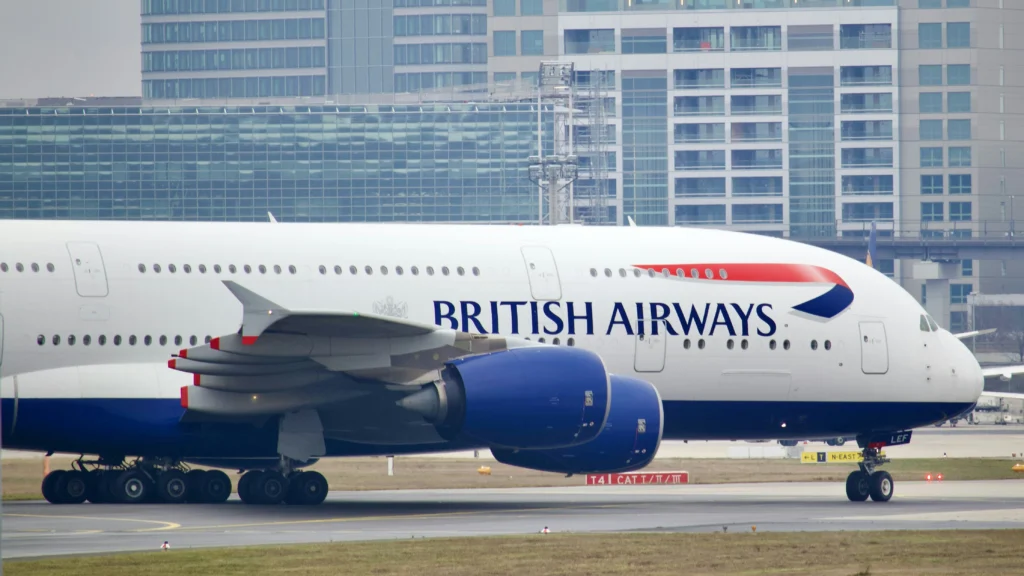Overview of the British Airways Flight BA286 Emergency
In May 2025, the British Airways emergency flight BA286 captured global attention when an unexpected in-flight situation forced the crew to take rapid action to ensure passenger safety. As one of the most vital transatlantic routes, this flight from San Francisco to London has long been essential for business travelers, tourists, and international commuters, operating primarily with widebody aircraft like the Airbus A380 or Boeing 777. Therefore, the incident underscores the complex interplay between crew training, aircraft design, airport preparedness, and emergency protocols in modern aviation.
Understanding British Airways Flight BA286 Operations
Flight BA286 is a flagship long-haul route connecting San Francisco International Airport (SFO) with London Heathrow Airport (LHR), typically lasting around 10 hours nonstop. With hundreds of passengers and a dedicated crew onboard, the flight relies on precise coordination between pilots, cabin crew, and air traffic control. Standard procedures and safety protocols ensure that emergencies, whether medical, technical, or environmental, are managed efficiently.
The May 2025 British Airways BA286 Emergency Incident
During the May 2025 journey, a serious situation unfolded that required immediate attention. While initially, some reports suggested a passenger medical emergency, others meanwhile indicated a possible in-flight fume event affecting air quality, and additionally, a few sources mentioned technical issues like hydraulic failure. Nevertheless, despite these variations in reporting, all accounts agree that the crew acted swiftly, prioritizing the safety of passengers and responding in accordance with aviation protocols.
The Flight Crew Response
Immediately after recognizing the emergency, the pilots and cabin crew followed established procedures. They communicated with air traffic control, declared a priority alert, and coordinated with airport emergency teams. Meanwhile, crew members provided first aid, monitored affected individuals, and ensured that the cabin remained calm. Passengers noted the professionalism and composure of the crew, observing that oxygen and medical kits were readily available and used when necessary. Overall, the coordinated teamwork reflected years of training and discipline.
Air Traffic Control and Airport Coordination in BA286 Emergency
Air traffic controllers play a critical role during any in-flight emergency. In such situations, they cleared surrounding airspace, guided the aircraft safely, and alerted emergency services at the destination airport. Moreover, whether the plane continued to London Heathrow, diverted to Vancouver International Airport, or returned to the departure airport, local paramedics, fire services, and medical teams were ready to assist immediately upon landing. Ultimately, this seamless coordination is a testament to decades of procedural refinement in aviation safety.
Aircraft Design and Emergency Preparedness on British Airways Flight BA286
Modern widebody aircraft like the Airbus A380 and Boeing 777 are engineered for both comfort and safety. Spacious cabins, advanced navigation systems, and redundant technical systems allow crews to handle unexpected events efficiently. Onboard emergency medical kits, portable oxygen, and telemedicine support systems like MedLink allow pilots to consult specialists in real time. This technology enables the crew to make informed decisions on whether to continue to the planned destination or divert to an alternate airport.
Passenger Experience During Emergencies
Passengers often do not notice the technical complexities during an emergency. However, their sense of safety depends on crew communication and cabin management. On BA286, travelers reported a calm environment and received clear instructions and reassurance from the staff. Emergency landing procedures caused minimal disruption. Therefore, this demonstrates that crew training is vital not only for technical skills but also for communication and managing passenger psychology.. Animators and creators can draw storytelling lessons from how crew handled communication under pressure, similar to principles discussed in Animation storytelling techniques.
Timeline of Key Events: British Airways Emergency Flight BA286 (May 2025)
- Departure from San Francisco International Airport on schedule.
- Mid-flight, an emergency is recognized, and the crew initiates priority protocols.
- Meanwhile, pilots communicate with air traffic control while cabin crew stabilizes affected passengers.
- Airport emergency services are alerted and prepared for immediate assistance.
- Aircraft lands safely at the designated airport; medical teams provide care.
- Post-landing inspections confirm no additional technical issues; passengers receive support as needed.
Lessons from the British Airways Emergency Flight BA286
- Preparedness Is Non-Negotiable: Crew members train rigorously, aircraft systems include redundancies, and telemedicine support helps manage emergencies calmly.
- Communication Matters: Clear, concise announcements prevent misinformation and reduce passenger anxiety. Creators in storytelling or media can learn from the clarity and pacing used in such high-pressure communication.
- Technical Systems Must Be Robust: Redundant hydraulic, electrical, and navigation systems prevent minor faults from escalating into crises. This principle applies to project management and system design in other fields.
- Airport Coordination Saves Lives: Pre-planned emergency protocols, rapid response teams, and real-time communication between pilots and ground staff highlight the importance of collaborative systems.
- Data and Investigation Drive Improvements: Post-incident reviews, flight recorder analysis, and maintenance inspections allow airlines to update procedures, enhancing future safety.
Conclusion
The British Airways emergency flight BA286 incident in May 2025 highlights the layered safety systems and professionalism in modern aviation. Well-trained crews, advanced aircraft design, and meticulous airport coordination show how aviation prioritizes human life. For passengers, creators, and aviation enthusiasts, the event reminds us that every flight relies on a network of technology, training, and teamwork to handle the unexpected. Animators, storytellers, and professionals can learn lessons in risk management, communication, and crisis response that go far beyond the cockpit. For insights on technical innovations in airline safety systems, see aviation safety analysis from IATA.
Read the full story on our blog to explore how teamwork, technology, and training turned a crisis into a lesson in aviation safety.
FAQs About British Airways Emergency Flight BA286
What prompted the emergency alert on British Airways flight BA286?
The A380 operating BA286 issued code squawk 7700 (general emergency) mid-flight, triggering priority handling. Reports suggest the cause was a medical event onboard, though investigation details remain undisclosed.
Which aircraft type and registration was BA286 flying during the incident?
The flight was operated by an Airbus A380, tail number G-XLEG.
When and from where did BA286 depart, and what was its destination?
BA286 left San Francisco International Airport (SFO) around 19:33 PDT on May 26, 2025, bound for London Heathrow (LHR).
Did BA286 divert or land at Heathrow after the emergency?
The flight landed at London Heathrow, under emergency priority. Emergency services were standing by upon arrival.
Were there any injuries or serious medical issues reported?
No major injuries were reported. Passengers and crew were safely handled, and the situation was treated as a medical emergency rather than a mechanical failure.


